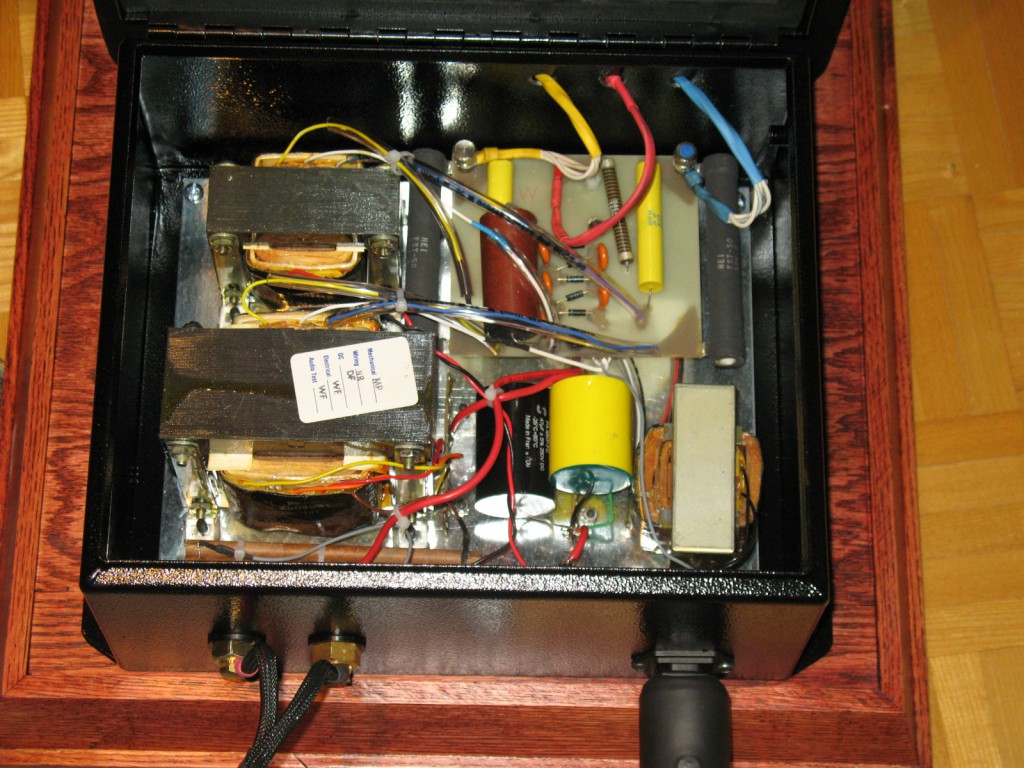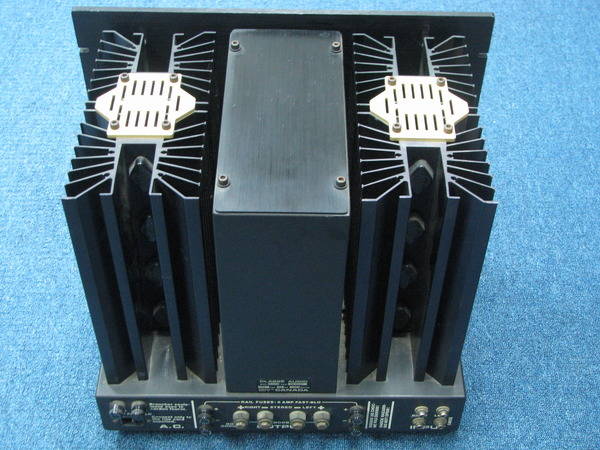Variac said:er, like "sucker"
like "yo sukka"
...and me, having grown up in Detroit.faustian bargin said:or "i'm gonna git you sucka"


Mark,Variac said:Mark from
Sucka Free City
(San Francisco)
as in "Sucka, where are my binding posts?"
I actually sold some of these suckas earlier this year.
http://www.diyaudio.com/forums/showthread.php?postid=148063#post148063
Maybe next year.
I'm looking at the Cardas patended binding post.
An externally hosted image should be here but it was not working when we last tested it.
Will it fit into a speaker with 38 mm (1.5") walls??
An externally hosted image should be here but it was not working when we last tested it.
Looking at the picture I would say that the bolt in the middle is the crucial part for this. Is it a standard bolt, or something special?
Don't know what they cost yet.
CARDAS PATENTED COPPER BINDING POST (EA) at Music Direct
This is for ONE only please x x x x x by 2 for a pair.
I use them- they're good connectors, and the statements about mounting have been largely correct. The thread pitch is finer than most bolts you'll see in this size, however- I think most are 18 tpi and IIRC the cardas use 24TPI bolts. The gap is just big enough to use a stainless panhead screw, which I prefer to the allen, as it gives more area to prevent the assembly from displacing wood. Stainless because it's non-magnetic (or nearly so) and strong. Normal steel could add a small additional inductance.
Has anyone here ever used bullet connectors like Castle Creations | CC Bullet Connectors
more specifically...
TowerHobbies.com | Castle Creations 6.5mm Polarized Bllt Conn Male Set 200
TowerHobbies.com | Castle Creations 6.5mm Polarized Bullet Conn Female Set
Ultra low resistance (class leading), 200amp rating on the 6.5mm polarized connectors, modified for panel mount works a peach and doesn't have the audiophilia related price tag attached.
more specifically...
TowerHobbies.com | Castle Creations 6.5mm Polarized Bllt Conn Male Set 200
TowerHobbies.com | Castle Creations 6.5mm Polarized Bullet Conn Female Set
Ultra low resistance (class leading), 200amp rating on the 6.5mm polarized connectors, modified for panel mount works a peach and doesn't have the audiophilia related price tag attached.
Naww....No way, those are Not Audio Weenie approved, No Sir!
Work fine up to silly high amps though
Although even there.. soldered connections, eschewing ANY connector is far cleaner. Preferable in most ANY High Amp EDF setup.
Albeit a bit of a nuisance to deal with... if a constant 'fiddler'
Work fine up to silly high amps though
Although even there.. soldered connections, eschewing ANY connector is far cleaner. Preferable in most ANY High Amp EDF setup.
Albeit a bit of a nuisance to deal with... if a constant 'fiddler'
Has anyone here ever used bullet connectors like Castle Creations | CC Bullet Connectors.
Why would anyone use kludges like those (or the Cardas contraptions) where there's a thoroughly modern connector in the Neutrik Speakon?
Cost is one, but yes speakon's work well too, just not as good electrically as CC's bullets. I just think it's rather ridiculous to spend $50 on a connector when a connector is needed that is no better than a Buss strip. That would come to $60 CC vs $400+ for the Cardas if I were to use on my speakers (8 active channels). They are certainly not uglier looking than the Cardas IMO.
For me it's a solid crimp (gas tight) connection and then a touch of silver low eutectic solder, NIST/mil spec. or directly wired. Even when a speaker is in the prototype stage, how often are we connecting/disconnecting really?!
For me it's a solid crimp (gas tight) connection and then a touch of silver low eutectic solder, NIST/mil spec. or directly wired. Even when a speaker is in the prototype stage, how often are we connecting/disconnecting really?!
greebster - agree with many of your points, but some of us actually do swap out speakers quite frequently, so while it could be argued that the best connector is none, direct hard-wiring (which applies equally at the amp end) is not particularly practical, and a compromise like decent contact bananas can be easy to accept.
I built a pair of speakers once for someone who insisted on using the Cardas - didn't much care for them, and certainly wouldn't have the time or patience to use them on systems that ever got moved around
And of course there's the school of "low metal mass in the mating connectors" - particularly at low to moderate power levels - of all the binding posts I've used, the Eichmann pods make sense, but are priced rather exorbitantly
I built a pair of speakers once for someone who insisted on using the Cardas - didn't much care for them, and certainly wouldn't have the time or patience to use them on systems that ever got moved around
And of course there's the school of "low metal mass in the mating connectors" - particularly at low to moderate power levels - of all the binding posts I've used, the Eichmann pods make sense, but are priced rather exorbitantly
Exactly, notice I said "when a connector is needed". 
I can see several potential issues using the CC bullets other than they are not designed for panel mounting and they don't lock. But even on the latter point of not locking these connections are exceedingly tight fitting, they would never fall apart unless subjected to high shock / vibration that the speaker would never survive. They certainly are not "standard" when swapping out speakers. Making a pigtail from these to a spade would certainly seem defeatist, add another link into the equation and a tad more contact resistance, if not for flexibility. A sacrifice made every time I need another type of cabling connector to adapt my Tek DSO. All of them are silver plated copper with gold center pins, insertion loss is less than 0.1dB per.
I can see several potential issues using the CC bullets other than they are not designed for panel mounting and they don't lock. But even on the latter point of not locking these connections are exceedingly tight fitting, they would never fall apart unless subjected to high shock / vibration that the speaker would never survive. They certainly are not "standard" when swapping out speakers. Making a pigtail from these to a spade would certainly seem defeatist, add another link into the equation and a tad more contact resistance, if not for flexibility. A sacrifice made every time I need another type of cabling connector to adapt my Tek DSO. All of them are silver plated copper with gold center pins, insertion loss is less than 0.1dB per.
Btw, when i mean tight, I mean PITA Holy Cow tight. It's not the housing at all, nothing but the mechanical connection. These are precision machined with exacting tolerances, eg, not a banana. When we use these for supplying three phase power to our electric RC jets or other similar powered aircraft in the >10 HP range (>7500w) these connectors are normally put together with a draw string with a stake at the end to help separate. Even with the smaller 4mm connectors about to rip our planes apart trying to remove.
Some years ago Castle Creations posted on RCUniverse forums results from testing every type of connector that could be used for RC. They had brushless speed controls failing and the culprit was contact resistance or overly optimistic specs, so bought them all and tested. There were several that topped the charts, mainly from Germany, where they seriously pay attention to detail. Today CC makes them to compete with the best of the best. Really nice guys over at CC, always ready to help. Maybe with a little convincing and even more demand they would make something for this polluted market.
Some years ago Castle Creations posted on RCUniverse forums results from testing every type of connector that could be used for RC. They had brushless speed controls failing and the culprit was contact resistance or overly optimistic specs, so bought them all and tested. There were several that topped the charts, mainly from Germany, where they seriously pay attention to detail. Today CC makes them to compete with the best of the best. Really nice guys over at CC, always ready to help. Maybe with a little convincing and even more demand they would make something for this polluted market.
Patent? I sure don't see anything that is not prior art. Anyway, I still never get the fuss over something that is best solved with a $2 terminal block. ( I actually prefer 1/4 inch brass bolts for about $1) They have fallen into the pure snake-oil market.
Lap a spade? Please. Tighten the screw. The tin will cold flow. Use an esoteric binding post finger tight? Yea it could cause an imaginary problem. PLEASE, look at the total current path. Trace it from the main caps, through the outputs, fuses, fast-on's cables, cold crimps to the binding post, into the speaker with more fast-ons and back again. After that, spend your money where it will actually do some good like more output transistors, better tweeters, or gasp, better recordings.
"You only need one hammer if you know how to use it." JSS
Lap a spade? Please. Tighten the screw. The tin will cold flow. Use an esoteric binding post finger tight? Yea it could cause an imaginary problem. PLEASE, look at the total current path. Trace it from the main caps, through the outputs, fuses, fast-on's cables, cold crimps to the binding post, into the speaker with more fast-ons and back again. After that, spend your money where it will actually do some good like more output transistors, better tweeters, or gasp, better recordings.
"You only need one hammer if you know how to use it." JSS
The tin is in a solid state that then turns plastic under pressure, it does not flow per se just mashes. Besides, lapping really is not that hard to do once you know how to properly. Akin to sharpening a plane blade for that perfect razor thin shaving is done more or less in 7 simple steps, some that may require repeating depending on wear. Once done it's done. 
Yes with a plane iron! Suprised the heck out of me seeing a demonstration first hand. It was at a local woodworking show by one of the plane manufactures few years back. Can't remember whom off the top of my head. Have also seen on PBS. Should be a video of it. Will have a look around 
Use of a medium stone for resurfacing, one pass each side normal then on to 4000grit diamond and then 8k, deburring along the way. Final step is to touch up (thin) the ends to reduce tear out. Very slick once you get it. A lot of how to hold, body control is necessary, kind of like putting (golf) crossed with working with a lathe mixed together.
The diamond waffle stones are nice and big. Plenty of elbow room unlike most stones made for knives and such.
Use of a medium stone for resurfacing, one pass each side normal then on to 4000grit diamond and then 8k, deburring along the way. Final step is to touch up (thin) the ends to reduce tear out. Very slick once you get it. A lot of how to hold, body control is necessary, kind of like putting (golf) crossed with working with a lathe mixed together.
The diamond waffle stones are nice and big. Plenty of elbow room unlike most stones made for knives and such.
- Status
- This old topic is closed. If you want to reopen this topic, contact a moderator using the "Report Post" button.
- Home
- Loudspeakers
- Multi-Way
- Cardas patented binding post


